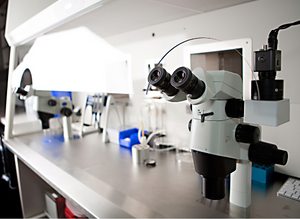Effective Strategies for Tracking and Managing Science Lab Equipment
There are several effective strategies for tracking and managing science lab equipment:
- Create an inventory: creating a comprehensive list of all the equipment in the label and update it regularly. This will help you keep track of what equipment you have, where it is located and who is responsible for it.
- Label equipment: label all equipment with unique identification numbers. This will make it easy to track the equipment and ensure it is returned to the correct location after use.
- Maintenance schedule: create a maintenance schedule for all equipment and stick to it. This will help ensure the equipment is in good working order and reduces the likelihood of equipment failure.
- Tracking software: use tracking software to keep track of equipment usage, maintenance history, and location.
- Standard Operating Procedures (SOPs): create and enforce standard operating procedures for the use, care and maintenance of equipment. This will help ensure equipment is used and maintained properly.
- Training: provide training to lab staff on the proper use, care and maintenance of equipment. This will help ensure equipment is used safely and correctly.
- Budgeting: create a budget for equipment purchases, maintenance, and repairs. This will help ensure you have the necessary funds to maintain and replace equipment as needed.
Importance of Accurate Inventory Management
Accurate inventory management is important for several reasons.
- Cost savings: keeping accurate inventory records can help prevent overstocking, which can lead to wasted resources and increased costs.
- Improved efficiency: accurate inventory management allows you to track the movement of assets in and out of your facility, which can help identify inefficiencies and bottlenecks in your supply chain, allowing you to make adjustments as needed.
- Better decision making: with accurate inventory data, you can make more informed decisions about production, purchasing and sales.
Overall, accurate inventory management ensures you have the right products in the right place at the right time and also helps you minimize costs while maximizing efficiency.
Why Inventory Management Matters in the Science Lab
Inventory management matters in the science lab for several reasons:
- Safety: ensuring lab equipment is in good working order and properly maintained is critical for safety. Accurate inventory management allows you to keep track of equipment usage, maintenance history and location, which can help ensure equipment is used safely and correctly.
- Research continuity: labs rely on a wide range of equipment and materials to conduct research. Accurate inventory management helps ensure necessary equipment and materials are available when needed, which can help prevent delays and disruptions in research.
- Compliance: some labs may be subject to regulations, such as those related to hazardous materials or controlled substances. Accurate inventory management can help ensure labs are in compliance with these regulations.
- Quality control: in scientific research, accurate measurements and experiments are important. Accurate inventory management can help ensure lab equipment is properly calibrated and maintained which can help maintain the integrity of research data.
Inventory management is essential in the science lab as it ensures equipment is safe and functional, resources are used efficiently research can be continued without interruption and regulations are adhered to.

The Consequences of Poor Inventory Management
Poor inventory management can lead to several negative consequences, including:
- Inaccurate inventory - poor inventory management can lead to equipment not being available when needed.
- Wasted resources - poor inventory management can lead to equipment that is not properly maintained.
- Loss of revenue - poor inventory management can result in lost revenue due to needing to replace misplaced or lost assets
- Reduced efficiency - poor inventory management can result in efficiencies in the supply chain, such as delays in receiving products or fulfilling orders, which can negatively impacting productivity.
- Damage to reputation - poor inventory management can lead to negative customer experiences which can damage a company's reputation.
Effective Inventory Management Systems for Science Labs
Effective inventory management systems for science labs can include:
- Inventory management software to track the usage of equipment, maintenance and repair of lab equipment, including scheduling, tracking and inventory management
- Hardware, i.e. barcode scanners and/or radio frequency identification (RFID) readers
- Barcode and/or RFID tags with unique number associated with asset on which it is placed
Best Practices for Securing High Value Lab Equipment
Here are some best practices for securing high value lab equipment: 
- Physical security: Use locks, alarm systems, and surveillance cameras to protect the equipment from theft or unauthorized access.
- Access control: Implement strict access control measures such as biometric authentication, smart cards, or keyless entry systems to control who can enter the lab and access the equipment.
- Network security: Ensure that the lab's network and connected devices are secure and regularly updated with the latest security patches and software.
- Regular audits and assessments: Conduct regular security audits and risk assessments to identify and mitigate potential security threats.
- Employee education: Educate employees on the importance of security and provide training on best practices to follow to keep equipment and data secure.
It's also important to regularly review and update these security measures as new threats emerge and technology evolves
The Role of Policies and Procedures in Science Lab Equipment Security
Policies and procedures play a crucial role in ensuring the security of science lab equipment. They provide a clear set of guidelines for handling and storing equipment, protecting it from theft, damage, or unauthorized use. Policies and procedures also help to ensure the safety of lab personnel, by establishing protocols for the properly using and maintaining equipment. By having well-defined policies and procedures in place, science labs can minimize the risk of equipment loss, damage or harm to individuals, and maintain the integrity of their research activities.
Preventing loss and theft of science lab equipment
Preventing the loss and theft of science lab equipment can be achieved through a combination of physical security measures and procedural controls.
Physical security measures include:
- Installing locks on doors, cabinets and drawers where equipment is stored

- Installing surveillance cameras
- Implementing restricted access controls, such as key card access or biometric authentication
Procedural controls include:
- Maintaining an inventory of all equipment and regularly updating it
- Assigning equipment to specific individuals and tracking its usage
- Establishing clear procedures for checking out and returning equipment
- Encouraging the reporting of lost or stolen equipment
In addition, educating staff and students on the importance of protecting lab equipment and the consequences of theft or loss can also be an effective deterrent.
Common causes of science lab equipment loss and theft
The common causes of science lab equipment loss and theft are:
- Lack of proper storage and security measures
- Poor record-keeping and inventory management
- Unsecured access to the laboratory
- Employee theft or misappropriation
- Assign responsibility for equipment inventory and regular checks.
- Label equipment clearly and record serial numbers.
- Store equipment securely, using locks or restricted access rooms when necessary.
- Ensure that only authorized personnel have access to the lab and equipment.
- Establish clear procedures for borrowing and returning equipment.
- Conduct regular audits to verify the presence of all equipment.
- Provide education and training for lab staff on security and safety protocols.
- Develop a reporting system for lost or stolen equipment.
Laboratory managers need to take appropriate measures to prevent equipment loss and theft, such as implementing security systems, regularly conducting inventory checks, and promoting a culture of responsible behavior among lab personnel.
The Role of Technology in Tracking Science Lab Equipment
Training and education play a crucial role in managing science lab equipment. They ensure that laboratory personnel have the necessary skills and knowledge to safely, effectively, and efficiently handle the equipment. Through training, personnel learn about the proper handling, operation, maintenance, and storage of equipment, as well as potential hazards and emergency procedures. This helps to prevent accidents and equipment damage and ensures that experiments and data obtained are reliable and accurate. Education, on the other hand, provides a deeper understanding of the scientific principles behind the equipment and its proper use. In summary, both training and education are essential for ensuring that science lab equipment is managed responsibly and efficiently, promoting the success of scientific experiments and projects.
Importance of Training and Education in Science Lab Equipment Management
Training and education in science lab equipment management are essential for several reasons:
- Safety: Proper training helps ensure the safe and responsible use of laboratory equipment, reducing the risk of accidents and harm to individuals and the environment.
- Compliance: Training and education help ensure compliance with regulations and industry standards, reducing the risk of legal penalties and reputational damage.
- Equipment maintenance: Training on the proper use, handling, and maintenance of equipment helps extend its lifespan and prevent costly repairs or replacements. Track maintenance records with asset tracking labels and tags from Metalcraft.
For more information on how Metalcraft can help your educational institution manage your science lab equipment or more, check out our blog on the role of technology: And check out our case studies page for real-world examples. Finally, you can contact our label experts at [email protected] to discover more about asset management for science lab equipment.
 | About the Author: Marianne AlvaradoMarianne Alvarado is our Vice President of Sales. Alvarado joined Metalcraft in March of 2000 as a Territory Specialist, became Sales Manager in January 2022 and was named Vice President of Sales during August of 2023. She leads both the Outside and Inside Sales teams. Marianne lives in Davenport with her husband, Dave Beeman. Mobile Phone: 641-529-9492 Email: [email protected] Office: 3360 9th St. SW, Mason City, IA 50401 Office Phone: 641-423-9460 |



